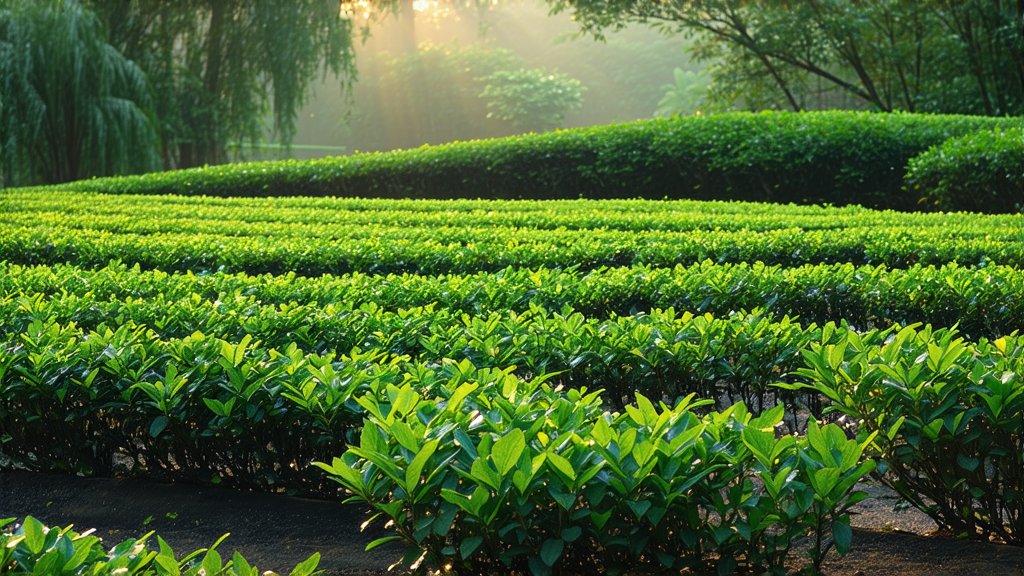
In the vast and diverse landscape of global tea culture, few varieties captivate the senses quite like Bai Hao Yinzhen, or 'Silver Needle', a prized member of China's revered white tea family. Originating from the mist-shrouded hills of Fujian Province, this exquisite tea embodies the essence of simplicity and purity, offering a glimpse into centuries-old traditions that continue to enchant connoisseurs worldwide.
Historical Roots:
Bai Hao Yinzhen's journey began over 800 years ago during the Song Dynasty, a time when tea was not merely a beverage but a symbol of sophistication and cultural refinement. Its name, translating to 'Silver Needle', aptly describes its delicate appearance—plump, bud-only pickings covered in a fine layer of downy trichomes (hence 'silver'), resembling slender needles. This tea was initially reserved for imperial courts and high-ranking officials, a testament to its prestige and the meticulous care with which it was cultivated and prepared.
Varieties and Characteristics:
Among the myriad of Chinese teas, Bai Hao Yinzhen stands out for its minimal processing, which preserves its natural flavors and nutritional properties. Unlike its more oxidized counterparts, white tea undergoes only two stages: withering and drying, allowing it to retain a high concentration of antioxidants, particularly polyphenols and catechins. The result is a tea characterized by its light, sweet flavor profile, subtle floral notes, and a lingering aftertaste that speaks volumes of its freshness.
Crafting the Perfect Cup:
The artisanal craftsmanship behind Bai Hao Yinzhen is as much an art as it is a science. Harvesting occurs during the early spring months, typically in March or April, when the tea plants produce their first flush of tender buds. These buds are carefully handpicked, ensuring only the finest, most pristine shoots make it into the final product. The withering process involves spreading the freshly picked leaves in thin layers under shade, allowing them to gradually lose moisture while enhancing their inherent sweetness. Following this, the leaves are gently dried, often through sun exposure or low-temperature baking, to lock in their unique character.
Appreciating Bai Hao Yinzhen:
To truly appreciate Bai Hao Yinzhen, one must embrace the art of Gongfu tea ceremony, a practice deeply rooted in Chinese culture. Begin by selecting a transparent glass or Gaiwan pot to observe the tea's unfurling dance. Rinse the leaves lightly with hot water (around 80-85°C) to awaken their dormant aromas before discarding this initial infusion. For subsequent steepings, allow the tea to infuse for no longer than a minute, savoring each sip slowly to fully experience its nuanced flavors. Notice how the liquor shimmers like liquid silver, a visual reflection of its name.
Health Benefits and Cultural Significance:
Beyond its sensory delights, Bai Hao Yinzhen boasts a myriad of health benefits. Rich in antioxidants, it supports immune function, aids digestion, and may even contribute to weight management. In traditional Chinese medicine, white tea is believed to have cooling properties, capable of soothing inflammation and promoting overall wellbeing. Moreover, Bai Hao Yinzhen holds a special place in cultural rituals, symbolizing purity, longevity, and the harmonious union between man and nature.
In conclusion, Bai Hao Yinzhen is more than just a tea; it is a bridge connecting past and present, tradition and innovation. Each cup tells a story of meticulous cultivation, careful processing, and a deep respect for nature's bounty. As you embark on your own journey exploring this remarkable tea, remember that in every sip lies a testament to centuries of wisdom and the enduring spirit of Chinese tea culture.
Keywords: Bai Hao Yinzhen, Chinese white tea, Fujian Province, minimal processing, health benefits, cultural significance.